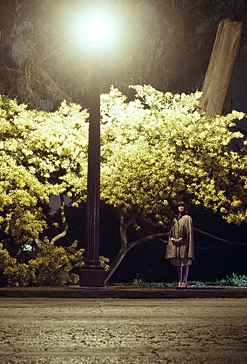Recently Natalie Portman appeared on Bravo's Project Runway hocking her vegan shoe line Te Cesan. While her shoes are adorable, I personally don't think certain vegan shoes are sustainable. Pleather isn't sustainable, in fact it's the opposite. With the exception of recycled plastic pleathers, these materials are made from petroleum products.
The desire to end the suffering of animals is noble and necessary. But plastic is not the answer. Leather is a byproduct of the food industry and using all of the animal does more justice to their sacrifice than letting things go to waste.
Truly sustainable shoes are ones that use recycled materials and use responsibly tanned leathers and sustainable production practices (that's more than just recycled packaging...a message to some of the vegan footwear makers).

Melissa Shoes, a Brazilian company, has been around for years, but recently started showing up everywhere in the US. The jelly style shoe is truly architectural and very appealing. They are made from mono plastics which mean they are 100% recyclable. You can throw them in with your bottles and leave them at the curb. This past season, they came out with the translucent line, Ultra III above, which is made from 100% recycled plastic. Furthermore, the company is committed to sustainability as they capture and filter all the waste in the air and water at their factory so that they can have a minimal impact on the environment. They also support many charities. What a great company, and great shoes!

Patagonia is another company that's big on sustainability. These shoes are made from pig skin uppers sourced from a small footprint tannery that is committed to clean environmental practices. The mid-sole and foot-bed are made from 20% recycled materials and the rubber out-sole is made from 20% scrap rubber.
Croc, not my favorite (proud to say they've never donned my feet) is doing some great work. They are gathering old, used crocs and mincing them up into bits, adding the bits to new material and forming brand new crocs. These shoes are sent to Haiti and donated to the poor there who can't afford shoes. A great program called SolesUnited.
Last, but not least, is Adidas' Grun line. Introduced last spring, these Adidas originals are made from recycled rubbers and hemp textile.










